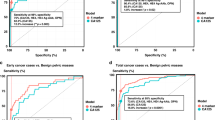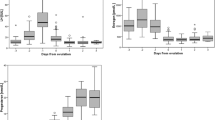Abstract
Inhibin is a polypeptide hormone produced by the granulosa cells of the ovary, and is present in body fluids as dimers of various sizes each comprising an alpha- and beta-subunit. Free forms of the alpha-subunit also circulate, and the presently available radioimmunoassay (Monash assay) cannot distinguish these from biologically active dimeric inhibin. Recently we described a new two-site enzyme immunoassay able for the first time to measure the levels of dimeric inhibin throughout the human menstrual cycle. The sensitivity limit of this assay is 2 pg ml-1 in human serum with cross-reactivity against activin of 0.05%. The normal range of inhibin in post-menopausal women is < 5 pg ml-1, in pre-menopausal women 2-80 pg ml-1 (2-10 pg ml-1 in the follicular phase, 40-80 pg ml-1 in the luteal phase). This assay was used to determine inhibin levels in sera from 15 (five pre-menopausal and ten post-menopausal) patients with granulosa cell tumours of the ovary. It was raised in a pre-menopausal patient preoperatively (261 pg ml-1), in six post-menopausal patients (32, 43, 54, 66, 24 and 58 pg ml-1) and one pre-menopausal patient with recurrent tumour, (237 pg ml-1), all confirmed clinically. Inhibin was normal in six patients in remission. Oestradiol levels were normal in all patients. Serial levels of inhibin predicted recurrence before overt clinical relapse in two patients. In 29 patients with malignant epithelial ovarian tumours inhibin levels were modestly elevated in nine and normal in the rest. Three patients with endometrioid histology, two with undifferentiated tumours, three with mucinous adenocarcinoma and one with clear cell carcinoma had elevated inhibin levels. Functional inhibin is secreted by all granulosa cell tumours of the ovary studied and can be used as a tumour marker to determine response to therapy and predict recurrence and is superior to oestradiol. A more detailed analysis of the levels of inhibin, and its subunits in epithelial ovarian cancer is needed to identify the molecular forms of the immunoreactive material before optimised assays can be applied to this more common tumour.
This is a preview of subscription content, access via your institution
Access options
Subscribe to this journal
Receive 24 print issues and online access
$259.00 per year
only $10.79 per issue
Buy this article
- Purchase on Springer Link
- Instant access to full article PDF
Prices may be subject to local taxes which are calculated during checkout
Similar content being viewed by others
Author information
Authors and Affiliations
Rights and permissions
About this article
Cite this article
Cooke, I., O'Brien, M., Charnock, F. et al. Inhibin as a marker for ovarian cancer. Br J Cancer 71, 1046–1050 (1995). https://doi.org/10.1038/bjc.1995.201
Issue Date:
DOI: https://doi.org/10.1038/bjc.1995.201
This article is cited by
-
A Systematic Review of Genetics and Reproductive Health Outcomes: Asian Perspective
Reproductive Sciences (2024)
-
Enhanced efficacy and specificity of epithelial ovarian carcinogenesis by embedding a DMBA-coated cloth strip in the ovary of rat
Journal of Ovarian Research (2012)
-
The modified radioimmunoassay of serum inhibin and its value in monitoring ovarian tumor
Chinese Journal of Cancer Research (1999)



